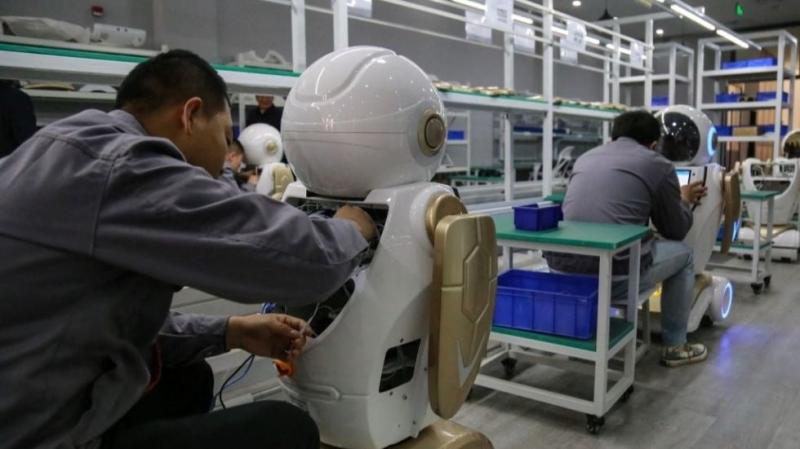China's plan to gather the 'best and brightest' in science and technology
By: Bradley A. Thayer and Lianchao Han (TheHill)


The Chinese recruitment program is more about repatriation than simply taking talent. However, there is a stark contrast between Chinese and Western motivations for supporting science and technology.
Western support for science and technology has been based upon money potential for academic and governmental institutions. Western science is very good at advancing scientific knowledge but has proven to be quite inept at transferring scientific breakthroughs to practical application. When the research funding runs out, the scientific advancement is placed on the shelf to gather dust and attention is redirected toward obtaining funding for other research. In the West, science only serves science and the predominant motivation is money.
China's apparent support for science and technology seems based upon taking the next step to transfer scientific advancement to practical applications that have commercial and social value. In China, science serves the state and the predominant motivation is to improve social conditions and strengthen the state.
Western education has adopted an institutional philosophy that liberal arts education addresses social conditions and strengthens society. Western emphasis on liberal arts has contorted scientific research into a source of money that subsidizes liberal arts education. China has adopted an institutional philosophy that application of science and technology directly addresses social conditions and strengthens the state. The Chinese approach has made scientific research self supporting through application.
China's repatriation of scientists and engineers is only a threat because Western liberal arts education isn't achieving what it's supposed to. To compete with China the West needs to rethink its educational priorities. Emphasizing social theories (such as Critical Race Theory) in education won't allow the West to compete with China. If China dominates the world then China will be telling us what social theories are acceptable, anyway.

To overtake the United States in science and technology, China takes advantage of America's openness and academic freedom to lure away Western-trained scientists and researchers. Although China's notorious Thousand Talents Program to recruit experts has gone underground, China continues to operate a massive talent-taking strategy through more than 200 talent recruitment plans, according to a Senate report. The U.S. government must take these threats seriously.
China devised its strategy of stealing Western talent soon after the founding of the People's Republic. It employs all possible means to lure individuals to China, and has been successful. Many scientists and researchers who built China's atomic and hydrogen bombs in 1964 and 1967, respectively, and launched China's first satellite into space in 1970 were expats who returned. In 1999, China awarded national medals of the "Two-Bombs, One-Satellite" project to 23 individuals who made instrumental contributions to China's lethal arsenal. Eighteen of the recipients were scientists trained in the West, and a majority of them were U.S.-trained.
This successful strategy has further affirmed the Chinese Communist Party's (CCP) belief that when it comes to winning a war, people are the decisive factor, particularly the talented individuals who are termed "rencai" in Chinese. Those trained in the West are strategic assets who have become targets for China to acquire. Chinese leader Xi Jinping has intensified the implementation of this strategy, telling top scientists in 2014 that, although China had topped the world in the number of scientists and technologists, it still fell short in innovative and world-class scientific and technological talents. To address this, Xi ordered implementation of his "rencai strategy" to be a priority to achieve China's national rejuvenation.
Xi's rencai strategy can be summarized as the effort to "gather all brightest minds under heaven to serve China." As an indication of Xi's seriousness, he has reiterated this goal on many occasions. In 2017, he instructed the CCP: "People with talent are a strategic resource for China as it endeavors to achieve national rejuvenation and stay ahead in international competition." He demanded that the party collect the best minds from around the world and use them to realize his China Dream. He emphasized that all such talent must be under the CCP's control. Therefore, the Organization Department of the CCP Central Committee has been provided more power and now is the primary agency in charge of China's overseas talent recruitment programs.
A good example is the HOME program, which stands for "Help Our Motherland Through Elite Intellectual Resources from Overseas." With the support of the Organization Department, the China Association for Science and Technology (CAST) initiated the program along with 35 overseas science and technology organizations in 2003, focusing on recruiting people of Chinese origin. On the surface, CAST looks like a trade organization but it actually is a CCP organ directly led by the Central Secretariat. CAST has more than 4.3 million members, with thousands of branches. This enables the organization's massive network to help carry out the CCP's overseas talent recruitment plans.
Because of its secrecy, it is hard to access the program's performance results, but from its magnitude and scope it's certain that the program has posed a major threat to America's ability to attract and retain some of the best and brightest talents from around the world. Now the HOME program has partnered with 96 foreign science and technology (S&T) entities in the West. Alarmingly for the U.S., it hosted a dozen of overseas talents a year at its initiation, a number that grew to 8,651 as of 2017. It boasts that the program so far has recruited 796 S&T teams and 2,880 individuals, including 145 for the Thousand Talent plan. The HOME program has set up 66 bases across China, and even has established working bases in Los Angeles and New York, according to its website. Wan Gang, the current president of CAST, is a Germany-trained automobile technologist who was lured away from Audi to China to lead its electric car development.
The HOME program targets researchers of Chinese origin because many expats are highly educated professionals working in science and technology. As of 2019, there were about 5.5 million Chinese in the United States, 51 percent of whom were engaged in management-related technology jobs, according to a report published in China. There are more than 300 Chinese-American members in the four leading National Academies of Sciences, Engineering, Medicine and Humanities, and more than 320 Chinese professors in the eight Ivy League universities. More than 200,000 graduates from 39 U.S. universities — many of whom also are alumni from universities in China — work in advanced technology companies or institutions, largely concentrated in the San Francisco Bay area, New York or Boston. China continues to send more than 300,000 students to the United States each year.
Recently, the National Institutes of Health (NIH) reported it has identified more than 500 "scientists of concern" working in the U.S., which captures the continued challenge. However, although U.S. law enforcement investigates intellectual property and trade theft by China, the magnitude of the problem appears to be enormous.
The U.S. government must formulate a more effective strategy to counter China's "rencai war." At present, China appears to be winning this war. If its victory is realized, China will have the critical technologies it needs to seek world hegemony and the U.S. will face a position of technological inferiority — something that has not happened in seven decades.
Bradley A. Thayer is the co-author of "How China Sees the World: Han-Centrism and the Balance of Power in International Politics."
Lianchao Han is vice president of Citizen Power Initiatives for China. After the Tiananmen Square massacre in 1989, he was one of the founders of the Independent Federation of Chinese Students and Scholars. He worked in the U.S. Senate for 12 years, as legislative counsel and policy director for three senators.





The West emphasizes liberal arts to address social conditions. China emphasizes application of science and technology to directly address social conditions.
What we are witnessing is a battle between thinkers and doers. China is demonstrating that science requires direct application to have value in supporting society. The West is on the wrong track.
The West does both.